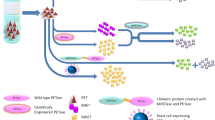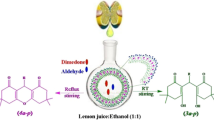Abstract
Pseudomonas sp. strain HBP1 Prp, a mutant of strain HBP1 that was originally isolated on 2-hydroxybiphenyl, was able to grow on 2-sec-butylphenol as the sole carbon and energy source. During growth on 2-sec-butylphenol, 2-methylbutyric acid transiently accumulated in the culture medium. Its concentration reached a maximum after 20 hours and was below detection limit at the end of the growth experiment. The first three enzymes of the degradation pathway — a NADH-dependent monooxygenase, a metapyrocatechase, and ameta-fission product hydrolase — were partially purified. The product of the the monooxygenase reaction was identified as 3-sec-butylcatechol by mass spectrometry. This compound was a substrate for the metapyrocatechase and was converted to 2-hydroxy-6-oxo-7-methylnona-2,4-dienoic acid which was identified by gas chromatography-mass spectrometry of its trimethylsilyl-derivative. The cofactor independentmeta-cleavage product hydrolase used 2-hydroxy-6-oxo-7-methylnona-2,4-dienoic acid as a substrate. All three enzymes showed highest activities for 2-hydroxybiphenyl and its metabolites, respectively, indicating that 2-sec-butylphenol is metabolized via the same pathway as 2-hydroxybiphenyl.
Similar content being viewed by others
References
Bradford M (1976) A rapid and sensitive method for the quantitation of microgram quantities of protein utilizing the principles of protein-dye binding. Anal. Biochem. 72: 248–254
Duggleby C & Williams P (1986) Purification and some properties of the 2-hydroxy-6-oxohepta-2,4-dienoate hydrolase (2-hydroxymuconic semialdehyde hydrolase) encoded by the TOL plasmid pWWO fromPseudomonas putida mt-2. J. Gen. Microbiol. 132: 717–726
Furukawa K, Simon JR & Chakrabary AM (1983) Common induction and regulation of biphenyl, xylene/toluene, and slicylate catabolism inPseudomonas paucimobilis. J. Bacteriol. 154: 1356–1362
Furukawa K, Tonomura K & Kamibayashi A (1979) Metabolism of 2,4,4′,-Trichlorobiphenyl byAcinetobacter sp. P6. Agric Biol Chem 43: 1577–1583
Gasiewicz TA (1991) Nitro compounds and related phenolic pesticides: In: Hayes WJ & Laws ER (Eds) Handbook of Pesticide Toxicology. Vol. 3. (pp 1191–1269) Academic Press, Inc., San Diego
Kohler HPE, Kohler-Staub D & Focht DD (1988) Degradation of 2-hydroxybiphenyl and 2,2′-dihydroxybiphenyl byPseudomonas sp. strain HBP1. Appl. Environ. Microbiol. 54: 2683–2688
Kohler HPE, van der Maarel M & Kohler-Staub D (1993) Selection of Pseudomonas sp. strain HBP1 Prp for metabolism of 2-propylphenol and elucidation of the degradative pathway. Appl. Environ. Microbiol. 59: 860–866
Kunz DA & Chapman PJ (1981) Catabolism of pseudocumene and 3-ethyltoluene byPseudomonas putida (arvilla) mt-2: Evidence for new functions of the TOL (pWWO) plasmid. J. Bacteriol. 146: 179–191
Massé R, Messier F, Ayotte C, Lévesque M-F & Sylvestre M (1989) A comprehensive gas chromatographic/mass spectrometric analysis of 4-chlorobiphenyl bacterial degradation products. Biomed Environ Mass Spectro 18: 27–47
Smith MR (1990) The biodegradation of aromatic hydrocarbons by bacteria. Biodeg 1: 191–206
Smith MR & Ratledge C (1989) Catabolism of alkylbenzenes byPseudomonas sp. NCIB 10643. Appl. Microbiol. Biotechnol. 32: 68–75
Stevens TO, Crawford RL & Crawford DL (1991) Selection and isolation of bacteria capable of degrading dinoseb (2-sec-butyl-4,6-dinitrophenol). Biodeg 2: 1–13
Strubel V, Engesser KH, Fischer P & Knackmuss HA (1991) 3-(2-Hydroxyphenyl) catechol as substrate for proximal meta ring cleavage in dibenzofuran degradation byBrevibacterium sp. strain DPO 1361. J Bacteriol 173: 1932–1937
Author information
Authors and Affiliations
Rights and permissions
About this article
Cite this article
van der Maarel, M.J.E.C., Kohler, HP.E. Degradation of 2-sec-butylphenol: 3-sec-butylcatechol,2-hydroxy-6-oxo-7-methylnona-2,4-dienoic acid, and 2-methylbutyric acid as intermediates. Biodegradation 4, 81–89 (1993). https://doi.org/10.1007/BF00702324
Received:
Accepted:
Issue Date:
DOI: https://doi.org/10.1007/BF00702324




